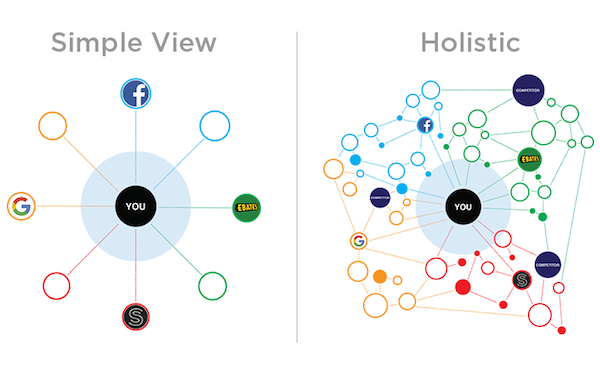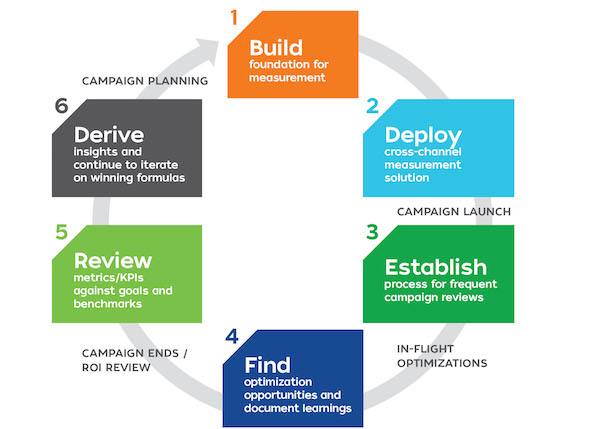The following is a guest post by David Dunne, CEO of Velocidi.
Marketers using data to inform strategy is not a novel concept. Yet the process for harnessing this information and the amount and type of data available to marketers have converged to redefine data-driven marketing in 2017.
Data that is siloed by applications, teams, and legacy systems has resulted in incomplete or incongruent resources. Access to total enterprise data, including customer data, sales data, and research, has widened the scope of the marketer’s reach. And this sheer volume has made the process of funneling data through to actionable insights more complex and challenging.
Brand managers, striving to maximize spend and performance, have an opportunity to embrace advanced marketing analytics and positively impact collaboration, real-time decision-making, and revenue. This starts by removing the perceived barriers to entry for working with data.
In order to maximize the value of marketing data, here are five assumptions marketing leaders should avoid:
Assumption 1: Data is not forward-looking; I can’t be responsive with data.
A 2016 Forrester study found that marketers are struggling to be responsive in real-time interactions with customers, as they focus on traditional performance measurements such as customer retention and acquisition.
The same study identified big data technologies as the bridge between customer experience and these marketing priorities. Many marketers limit data to postmortem evaluation of campaign performance. Outdated data-management processes are often to blame — the laborious tasks of managing and reporting leave little time for forward-looking analysis.
But marketing technology that streamlines multi-channel performance measurement can provide near-real-time analysis that enables greater responsiveness. For example, automated visualization and predictive modeling help marketers identify patterns within data that can inform real-time decision-making.
Assumption 2: Marketers must become mathematicians to use AI.
Last year, Demandbase and Wakefield Research found that 80% of B2B marketers believed AI would “revolutionize” marketing by 2020. However, only 26% reported confidence in their own understanding of AI’s applications. Furthermore, more than half cited technology integration and staff training as barriers to entry.
Contrary to popular belief, marketers do not have to be familiar with advanced mathematics and algorithms to make use of machine learning. The best marketing intelligence platforms — that is, the applications and infrastructure that enable access to and analysis of marketing data — will seamlessly integrate AI technology via reporting, visualization, and insight-generation, giving marketers more time to discover trends and opportunities for growth.
Assumption 3: Data undermines creativity.
Effective marketing is a combination of data-driven insights and creative thinking. Data-in, data-out is not the be-all and end-all of strategic output. Marketing will always be a creative industry; but marketers who embrace data-led creativity will have the upper hand.
Integrating audience, brand, and sales data to predict customer behavior may tell you what you need to communicate, but not how — that personalization comes from knowing your audience. Data science, then, complements the marketer’s own intuition; it doesn’t replace it.
Think of data as the layer of insight that fuels your own creative thinking.
Assumption 4: Someone else on my team will take care of the data.
Last year, Forbes Insights and Oracle Marketing Cloud reported significant struggles in brand-agency collaboration due to evolving roles within each organization.
Data management is surely a casualty of this dynamic. Collaboration between brand and agency teams is extremely important, but somehow data seems to get pushed off from one team to another.
If marketers want to maximize collaboration and, therefore, boost the value of marketing performance, closing the data literacy gap across both brand and agency teams is key. Proximity to data is essential to faster, timelier decision-making. When marketers put the right tools and processes together for collaborative data practices, there is tremendous opportunity for growth.
Assumption 5: I’ve invested too much into data management to disrupt this system.
A December 2016 study by Econsultancy found that while marketers have access to multi-channel data, their “methodologies are still forcing everything through the same outdated, siloed processes.”
Obtuse systems for data management and reporting have the unfortunate advantage of denying marketers insights that could impact revenue, customer retention, and media spend. Marketers are in a position to weigh the costs of retaining outdated systems as data accessibility grows.
Luckily, disruption is more manageable when your objectives are clear. For a faster line from data to insights, marketers should look for a system that provides a single view of all data in near-real time.
Thanks, David!




Using forward-looking strategies sounds valuable moving into the digital age. You don’t have to wait til you lost a customer to do something about their experience. It’s important to evolve with technology